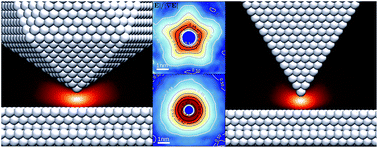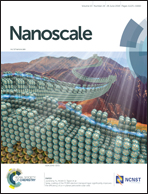Morphology dependent near-field response in atomistic plasmonic nanocavities†
Abstract
In this work we examine how the atomistic morphologies of plasmonic dimers control the near-field response by using an atomistic electrodynamics model. At large separations, the field enhancement in the junction follows a simple inverse power law as a function of the gap separation, which agrees with classical antenna theory. However, when the separations are smaller than 0.8 nm, the so-called quantum size regime, the field enhancement is screened and thus deviates from the simple power law. Our results show that the threshold distance for the deviation depends on the specific morphology of the junction. The near field in the junction can be localized to an area of less than 1 nm2 in the presence of an atomically sharp tip, but the separation distances leading to a large confinement of near field depend strongly on the specific atomistic configuration. More importantly, the highly confined fields lead to large field gradients particularly in a tip-to-surface junction, which indicates that such a plasmonic structure favors observing strong field gradient effects in near-field spectroscopy. We find that for atomically sharp tips the field gradient becomes significant and depends strongly on the local morphology of a tip. We expect our findings to be crucial for understanding the origin of high-resolution near-field spectroscopy and for manipulating optical cavities through atomic structures in the strongly coupled plasmonic systems.



 Please wait while we load your content...
Please wait while we load your content...
